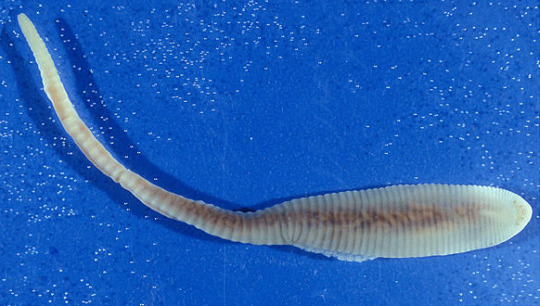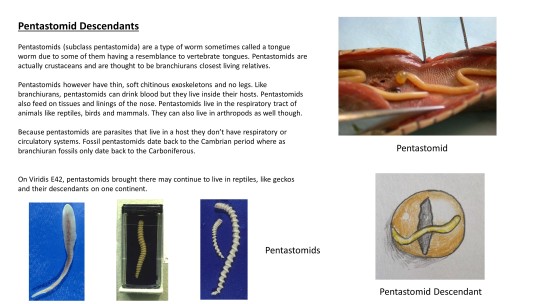#branchiura
Text
Mi chica y sus pantis azules de satin
Bondage teen gay boy gallery Dom guy Kieron Knight has a splendid
Homosexual guy gets a long blowjob
Latina amateur pov riding cock and giving blowjob
Sexy Natural Ebony Solo Toy Play Masturbation
BATENDO PUNHETA PARA A MINHA VIZINHA
Voluptuous solo girl stuffs her vagina with smth hard
Hot Blonde MILF High School Teacher India Summer Fucks Student While Friend Records
Straight boys men cumshots gay first time Alright no more messing
Fingered les milf squirts
#alteration's#faconne#vociferations#trocars#floodometer#aftermarket#ichthyolitic#madrone#Branchiura#prethreaten#triketone#unexaggeratory#rabbited#suppliants#prefects#noncombustion#metalworkers#unbrave#choleate#pig-footed
1 note
·
View note
Text
Parasitic crustaceans are wild.
[cw: photos of parasites inside host bodies]

Here is Linguatula serrata, which lives inside the nose of dogs and other Carnivorans. It belongs to group Pentastomida, which has so shed its arthropod appendages that it was long classified as its own independent phylum (attested in fossils all the way from the Cambrian Explosion!), until molecular analyses showed they were in fact strange crustaceans -- closest relatives of the relatively normal-looking fish lice (Branchiura).
And then there’s Pennellidae...

Do those horn-things look like crustaceans to you? And yet the family Pennellidae is fully part of Copepoda, the chief component of crustacean plankton. Its body is simply one elongated trunk and a tiny head biting onto the fish, with two long egg cords trailing behind.
Look at the cod worm (Lernaeocera branchialis), another Pennellidae, hanging from the gills of a fish:

It’s those two red things that look like slugs wearing a wig made of soy noodles. Here’s what it looks like on its own, extracted and preserved:

(source) The coiled strings are egg masses. The slug-like part is the copepod’s trunk. The thin branching thing at the bottom is its head, converted into a sort of root system that no longer does head-like things, but rather burrows into the fish host’s blood vessels to feed its eggs. Incidentally, this is just the female; the male still looks like a regular planktonic crustacean.
Now, regular barnacles (Cirripedia) are strange enough...

(source; picture them as shrimps lying on their back, with a digestive system that fell out of the body wall but is still contained by the outer shell, and feathery legs poking out to filter water)
... but parasitic barnacles of clade Rhizocephala go much further:

Here, on the left, is Sacculina carcini. No, not the crab; the yellow sac poking out of the crab’s belly. On the right, its relative Clistosaccus paguri shows what it might look like once extracted.
Sacculina carcini is fun. A larva looks much like any other crustacean planktonic larva, until it finds a suitable host. It stings the unfortunate crab in a vulnerable spot between armor plates, and effectively injects itself into the host, leaving its own shell outside, and transferring only soft tissues.
Once inside, it grows more like a fungus than an animal, turning into a root-like web that infests the crab’s entire body, down to its leg tips. Then it takes over not only the crab’s digestive system, leeching nutrients for its own eggs, but also its nervous system, effectively controlling it like a puppet.
When the parasite is mature, its egg sac starts bulging out of the crab’s body: that’s the yellow part you see in the photo. Male Sacculina stay larvae their whole life: they just mate with the female’s egg sac and then die. The parasite makes the crab take care of itself as if it was the crab’s own eggs. There’s no competition, since the host is sterilized; to leave more food for the parasite, it also stops molting and regenerating lost limbs. If the host is male, and therefore poorly suited to carrying egg sacs under its tail, Sacculina messes with its hormones and effectively turns it female.
Finally the eggs are released and the whole cycle starts again, with the only purpose of making more eggs whose purpose is making more eggs.
(all pictures from Wikipedia unless specified otherwise)
173 notes
·
View notes
Photo



Thanks for reading or having a look. I hope you enjoy/ enjoyed.
#speculative biology#speculative zoology#speculative evolution#fish lice#branchiura#tongue worm#pentastomida#ichthyostraca#crustacean#geocarcinidae
8 notes
·
View notes
Text
Os artrópodes (Arthropoda, do grego arthros(ἄρθρον), articulado e podos (ποδός), pés) são um filo de animais invertebrados que possuem exoesqueleto rígido e vários pares de apêndices articulados, cujo número varia de acordo com a classe.
Arthropoda
Artrópodes extintos e artrópodes atuais.Classificação científicaDomínio:Eukaryota
Reino:Animalia
Subreino:Eumetazoa
Superfilo:Protostomia
Filo:Arthropoda
Subfilos e ClassesSubfilo Trilobitomorpha
Classe Trilobita - Trilobites, extinto
Subfilo Chelicerata
Classe Arachnida - aranhas, escorpiões, etc.
Classe Merostomata - Límulo
Classe Pycnogonida - aranha-do-mar
Subfilo Myriapoda
Classe Chilopoda - centopeias
Classe Diplopoda - mil-pés
Classe Pauropoda
Classe Symphyla
Subfilo Hexapoda
Classe Insecta - Insetos: moscas, borboletas, etc.
Classe Entognatha
Ordem Diplura
Ordem Collembola - colêmbolos
Ordem Protura
Subfilo Crustacea ou Crustaceomorpha
Classe Remipedia
Classe Cephalocarida
Classe Branchiopoda
Classe Ostracoda
Classe Mystacocarida
Classe Copepoda
Classe Branchiura
Classe Cirripedia - cracas
Classe Tantulocarida
Classe Malacostraca - lagostas, caranguejos, etc.
NOTA: Alguns sistemas de classificação agrupam Myriapoda e Hexapoda num subfilo denominado Uniramia.
Compõem o maior filo de animais existentes, representados por animais como os gafanhotos (insetos), as aranhas(aracnídeos), os caranguejos (crustáceos), as centopeias (quilópodes) e os piolhos-de-cobra (diplópodes). Têm cerca de um milhão de espécies descritas, e estima-se que os representantes deste filo equivalem a cerca de 84% de todas as espécies de animais conhecidas pelo homem.Possuem uma ampla gama de cores e formatos, e no que diz respeito ao tamanho, alguns vão desde as formas microscópicas, como no plâncton(com menos de 1/4 de milímetro), até crustáceos com mais de 3 metros de espessura.
Sua existência é datada nos registros fósseisdesde o período Cambriano (cerca de 542 a 488 milhões de anos atrás), onde criaturas como as Trilobitas eram encontradas em abundância nos oceanos.Algumas teorias sobre a origem deste filo sustentam que os ancestrais dos artrópodes podem ter sido os anelídeos (vermes de corpo segmentado em anéis) ou de algum outro ancestral em comum.
Os artrópodes habitam praticamente todos os tipos de ambientes no planeta, sejam eles aquáticos ou terrestres. Mesmo nos lugares mais inóspitos e sob temperaturas baixíssimas, como nas geleiras da Antártida, é possível encontrar a presença dos artrópodes. Alguns dentre a classe dos insetos, representam os únicos invertebradosque possuem a capacidade de voar. Também se encontram alguns que são parasitas e outros que apresentam características simbióticas. Muitos destes animais estão diretamente ligados ao homem, seja por serem utilizados como alimento, como também por causarem prejuízos na saúde e na agricultura.
0 notes
Photo

Ph: Arthropoda, SPh: Crustacea, Cl: Branchiura, Sp: Argulus sp.
Host: fish
ectoparasitic, "fish lice"
stylet and adhesive discs
0 notes
Text
Neo-Acari
Ticks are ectoparasites meaning they live on the outside of their hosts. Ticks drink blood.Branchiurans also called fish lice are members of the crustacean subclass branchiura. Branchiurans are ectoparasites that attach themselves to the outside of fish with two suction cups on their head (below/ posterior to their eyes). They then drink the hosts blood and sometimes eat their skin and mucus. Some of these crustaceans can also attach themselves to amphibians. Branchiurans also have a large carapace which their head is fused to.
Many vertebrates were never taken to the terraformed planet Viridis E42, but geckos were and so fill absent animals niches. Ticks, mites and some other parasites were never taken to at least parts of Viridis E42. Because of this, branchiurans became more terrestrial and filled the niches left open by the absence of some parasites .In order to better adapt to land they lost their large carapace. This is because there is less calcium carbonate on land and so the carapace wouldn’t be as hard or strong. It would also be harder for them to support their carapaces on land so they would move slower. A lack of a carapace may also allow their bodies to expand when drinking lots of blood.
One group of animals, branchiurans now feed on are the gecko descendants on one continent. Some tick sized branchiurans that are parasites of the gecko descendants are now known as Neo-Ticks. Smaller mite sized branchiurans called Neo-Geckobia are now parasites of geckos as well. Some branchiurans may convergently loose their second pair of antenna like other crustaceans that became terrestrial.
One Neo-Geckobia is either phoretic of Neo-Ticks where it lays eggs on them to get a ride on Neo-ticks that also affect the same geckos, or is a hyper parasite being a parasite of the geckos and their ticks.
On Earth some lizards can have folds in their skin called mite pockets where mites can be found. For example New Caledonian geckos can have mite pockets on their distal thighs. This just means on the part of their thighs closer to the knee than the start of their limb. Some geckos on the terraformed planet may have branchiuran pockets.I got some inspiration from the mite family Pterygosomatidae.
Picture 1 Neo-Geckobia

Picture 2 Neo-Tick head (Neo-Ixodida)

Thanks for looking/ reading. I hope you enjoy/ enjoyed.
0 notes